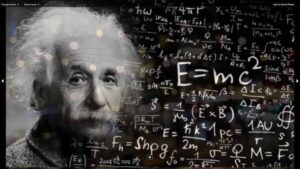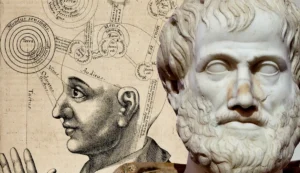Three Ways to Nurture Genius Thinking in Your Child
When we talk about cultivating genius in children, we’re not just referring to IQ scores or early academic milestones. True genius lies in how a child sees the world. Some of the greatest minds in history such as Leonardo da Vinci, Albert Einstein, and Aristotle offer us distinct models for how gifted thinking can develop. Each brings a unique lens we can nurture in children through the right kinds of experiences and questions.
 Seeing the World Like Leonardo da Vinci: The Synthesiser of Wonder
Seeing the World Like Leonardo da Vinci: The Synthesiser of Wonder
Leonardo saw everything as connected. He wasn’t just an artist, engineer, or scientist, he was all three, often at the same time. For Leonardo, learning wasn’t about subjects. It was about uncovering the deeper patterns that connect art to anatomy, mathematics to design, flight to physics.
He once sketched flying machines inspired by birds, painted expressive faces by dissecting cadavers, and solved architectural problems by applying principles from nature. His genius came from seeing across disciplines.
In our classrooms, I see this in students who:
- Use sketching to make sense of science concepts.
- Build machines inspired by animals (biomimicry).
- Ask why a mathematical pattern shows up in a sunflower, a seashell, or a galaxy.
How to support this at home: Encourage your child to combine ideas across subjects. Ask, “What does this remind you of in another area?” Give them a journal to draw, doodle, or invent. Let curiosity lead.

Seeing the World Like Albert Einstein: The Architect of Imagination
Einstein famously said, “Logic will get you from A to B. Imagination will take you everywhere.” He didn’t arrive at the theory of relativity by memorising formulas. He did it by imagining what it would feel like to ride on a beam of light.
Einstein’s thinking was powered by visualisation, metaphor, and play. He questioned assumptions, turned ideas upside down, and used imagination to solve problems that others saw as fixed.
In gifted education, I see Einstein-like thinkers in students who:
- Invent “what if” scenarios that reframe a problem entirely.
- Use storytelling to explain scientific theories.
- Play with abstract ideas long before they’re formally introduced.
How to support this at home: Invite imaginative inquiry. Ask, “What if the laws of gravity worked differently?” or “What would this look like from an ant’s perspective?” Create time for open-ended thought experiments and speculative thinking.

Seeing the World Like Aristotle: The Philosopher of Patterns and Purpose
While Leonardo synthesised and Einstein imagined, Aristotle structured. He asked big questions about why things exist and how they function in the world. He believed every object and living thing had a purpose, and he sought to understand both the essence of things and the principles behind their behaviours.
Aristotle’s methodical observation laid the foundation for biology, logic, ethics and rhetoric. He taught us to look deeply at cause and effect, to organise our thinking, and to understand the why behind the what.
In students, Aristotle-like thinking often shows up when they:
- Create classification systems or taxonomies of the world.
- Ask philosophical or moral questions about fairness, rights, or justice.
- Break complex ideas into logical steps or argue a case with clarity.
How to support this at home: Encourage deep questioning. Ask, “Why do you think that happens?” or “What do you think the purpose of that might be?” Support your child in structuring their thinking through charts, diagrams, or debates.
Why These Ways of Seeing Matter
In a rapidly changing world, our children will need more than just knowledge, they’ll need mental agility, creative courage, and ethical wisdom. Seeing like Leonardo helps them integrate ideas across domains. Seeing like Einstein teaches them to imagine what’s never been done. Seeing like Aristotle supports them in reasoning with logic and depth.
When we make space for our children to wonder, visualise, connect, question, and experiment—we give them the opportunity to grow not only into brilliant thinkers but whole learners who are equipped to shape the future.
